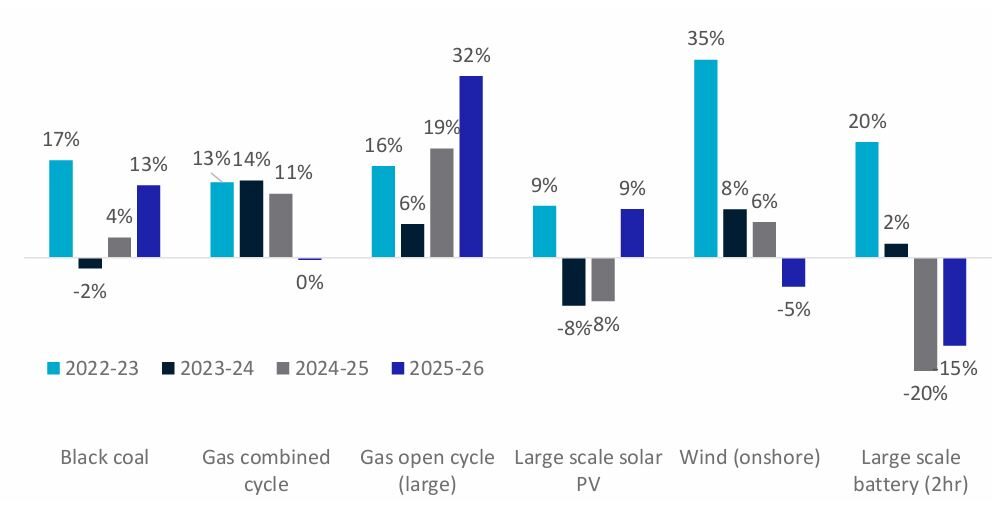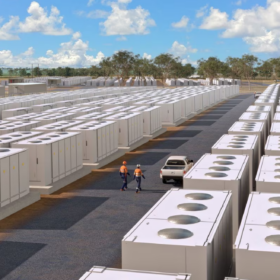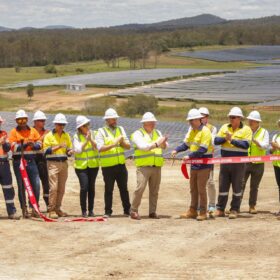Mining companies have been urged to work with governments, energy providers, and transmission developers to deliver a coordinated approach to building electricity generation and transmission infrastructure to support energy security and reliability in the resource-rich Pilbara region and reduce the impact of industry on the environment.
A report commissioned by the federal government’s Clean Energy Finance Corporation (CEFC) found a coordinated transmission strategy could save more than $30 billion (USD 20.01 billion) over the next 25 years while fast-tracking industrial decarbonisation.
The Pilbara currently accounts for about 40% of Western Australia’s emissions and 23% of Australia’s industrial emissions, largely due to the concentration of energy-intensive mining and heavy industrial projects in the region. About 98% of the region’s power is still generated from fossil fuels, despite the region being rich in solar and wind resources.
The report, prepared by Marsden Jacob Associates, presents a compelling case to pursue a coordinated Common User Transmission Infrastructure (CUTI) approach that would enable multiple users and generators to connect to a single, shared grid, replacing the traditional ‘go-it-alone’ model where each miner builds and operates their own private infrastructure.
Modelling estimates the cost of transmission in the go‑it‑alone model over 25 years to 2050 is $14.7 billion, 40% higher than the $10.5 billion forecast for the common-user approach of $10.5 billion. The capital cost of generation to 2050 of $131.6 billion in the go‑it‑alone case is 25% higher than that of the common-user approach of $105.4 billion.
CEFC Executive Director, WA and Resources, Rob Wilson said the findings highlight the need for urgent collaboration across industry, government and developers.
“This is a clear opportunity to build it once and build it right. The economic case is overwhelming. And the coordination required is both achievable and essential,” he said.
The report warns that without coordinated planning, the region could repeat mistakes made in the rail sector which have resulted in parallel infrastructure, increased land disturbance and limited access for smaller operators.
“The cost of delay is enormous,” Wilson said. “It takes years and many millions of dollars in early investment to identify corridors, conduct engineering, and secure approvals. Without increased commitment from stakeholders now, the region risks defaulting to expensive and inefficient solutions.”
The proposed CUTI model envisions a coordinated network connecting 12 load nodes with renewable energy generation hubs through upgraded existing links and new connections in priority corridors.
The modelled CUTI scenario requires 2,362 km of new and upgraded transmission lines – 407 km less than the go-it-alone approach – and delivers the same energy reliability and emissions outcomes with 29% less new line construction and 21% less land use.
The coordinated model would enable deployment of 4 GW of solar, 5 GW of wind, and 6.3 GW of battery energy storage by 2035 under the base case. In high-demand scenarios, enabled by CUTI, those figures rise substantially to support electrification of not only mining but also LNG production and emerging industries like green hydrogen, ammonia, and iron.
The report says isolated grids would require roughly 19% more generation and storage capacity to meet the same demand, due to inefficiencies in resource sharing across networks.
CEFC Chief Executive Officer Ian Learmonth said shared infrastructure would help position Australia as a global clean energy leader.
“The Pilbara is one of Australia’s economic powerhouses, and it now has a critical opportunity to lead the nation’s industrial decarbonisation,” he said. “This report confirms that smarter, shared infrastructure delivers both climate and economic wins. It is the kind of solution that strengthens Australia’s position as a future energy superpower.”
This content is protected by copyright and may not be reused. If you want to cooperate with us and would like to reuse some of our content, please contact: editors@pv-magazine.com.









By submitting this form you agree to pv magazine using your data for the purposes of publishing your comment.
Your personal data will only be disclosed or otherwise transmitted to third parties for the purposes of spam filtering or if this is necessary for technical maintenance of the website. Any other transfer to third parties will not take place unless this is justified on the basis of applicable data protection regulations or if pv magazine is legally obliged to do so.
You may revoke this consent at any time with effect for the future, in which case your personal data will be deleted immediately. Otherwise, your data will be deleted if pv magazine has processed your request or the purpose of data storage is fulfilled.
Further information on data privacy can be found in our Data Protection Policy.